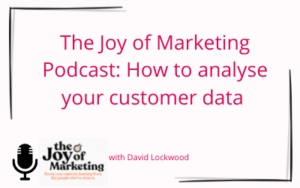It’s one hell of a treasure chest…
One that is worth trillions of dollars worldwide.
Did you know that 20.8% of retail purchases are expected to take place online in 2023?
Forbes magazine predicts that total global sales will be $6.3 TRILLION – that’s up from $4.2 trillion in 2020. And by 2026, the e-commerce market is expected to total over $8.1 trillion. You need to maximise your share of that.
With more customers shopping online, your business can sell more and earn more as a result. Whether your goal is to boost your sales by a small percentage or you hope to completely transform your business from a start-up to a large organization, e-commerce can help. As the world becomes more connected and digital, this marketing niche continues to grow at an unprecedented rate.
Email marketing remains an essential component of any e-commerce business marketing mix, especially for Shopify users. Yes, email has shown some signs of fatigue through the sheer volume that people receive. But it remains and continues to be a powerful and effective tool for businesses of all sizes. Indeed, Statista estimates that email marketing revenue will reach almost $11 billion worldwide by 2023. So it will become increasingly important how you segment your data base.
Do you – for example – ‘spray and pray’ That is throw a one size fits all at everyone – and hope someone responds? Are you being as targeted and relevant as you could be for your customer?
If you are sending one email to everyone, break it down. Maybe you need to create 10 or 20 different emails that are personalized and relevant – maybe you need to do that using the same amount of internal resource.
Are your first 5/6 communications telling the brand story… the range story… the ‘why you should choose us’ story? Did you know triggered emails have greater deliverability than campaign emails?
Do you make more money by being relevant and personalized? Yes.
That is not to say that sometimes emails can seem less effective – that there can be some level of fatigue at the sheer volume that consumers receive driving a reduction in click and open rates. As with mailings, emails may still serve as a reminder to consumers that a brand is still relevant and interesting. It’s just that customers expect a lot more for their attention, such as personalisation, tailored advice on product, better cost per use and so on.
Get this right and your Net Promoter Score (NPS) can only benefit. Businesses use NPS to measure customer satisfaction and loyalty. It is a key metric for your eCommerce business that shows you how many of your customers are willing to recommend your products or services to other people.
Your Net Promoter Score will help you find out what people think about you and whether they will come back. Delight them and they could become advocates for your business or brand. Which means it is worth looking at ways you can appreciate your advocates more without spending money.
For example, leave a comment on favourable reviews. Appreciate that comment. Do the same with bad or negative reviews. Personalise the response to the negative review. Yes, it takes time… but it is also an an investment that pays off. Most customers don’t expect everything to run smoothly all the time, so your ability to deal with the problem well, can turn them in to even better advocates.
Similarly, with good customers, don’t just assume they want cash for referring a friend. Make it unique, personal and special – free product, plant a tree, make a donation to charity. True brand advocacy is centred around driving organic, not transactional, referrals from customers. It is about creating ‘moments of delight’.
And of course, that is also all about understanding your customer.
If you’re unsure how to start building (or rebuilding) a customer-centric marketing approach, reach out to us at [email protected], and we’ll be happy to chat with you.




